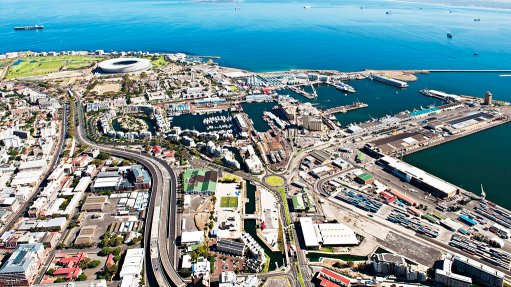
V&A WATERFRONT The tourist attraction hopes to reduce its demand on the energy grid in the Western Cape with a R20-million solar project
In an effort to reduce its demand on the energy grid in the Western Cape, the V&A Waterfront has begun a R20-million solar project that will include the installation of 7 000 m2 of solar panels on the roof of eight buildings across the property.
The solar panels will have a total capacity of 1 094 kWp and will be installed on the roofs of the Watershed, the Breakwater apartments, the Clock Tower, Granger Bay, Two Oceans Aquarium, Port Edge, West Quay and Portswood House.
The project is expected to be completed by the end of the year or early 2016 and is funded by shareholders of the V&A Waterfront – property investment companies Growthpoint Properties and Public Investment Corporation.
V&A Waterfront executive manager of operations Colin Devenish tells Engineering News that the tourist destination hopes to significantly reduce its electricity consumption and costs, as well as its dependency on the energy grid by 1 721 956 kWh/y.
“As a big corporate and one of the city’s top three consumers of power, it is our responsibility to find ways to reduce our demand on the grid. The project will help us educate our customers [on the importance of saving electricity] and we want to act as a case study for other companies wanting to install solar panels,” he says.
The panels will be activated as they are installed on each roof, which Devenish says is an advantage, as the V&A Waterfront will reap the benefits of not having to wait for the installation of all eight roofs before seeing the energy-saving results.
As part of the installation, the V&A Waterfront will also replace the roofs of its properties, where necessary. Devenish says this will not disrupt the daily activities on the property.
V&A Waterfront CEO David Green says, as the environment is fragile, it is important to adopt renewable-energy resources for future generations.
“Our new solar infrastructure means that we can significantly reduce our environmental footprint and draw less power from the grid. This translates into a tangible benefit for the residents of Cape Town as there will be more power available for them, and it makes good business sense for us too,” he adds.